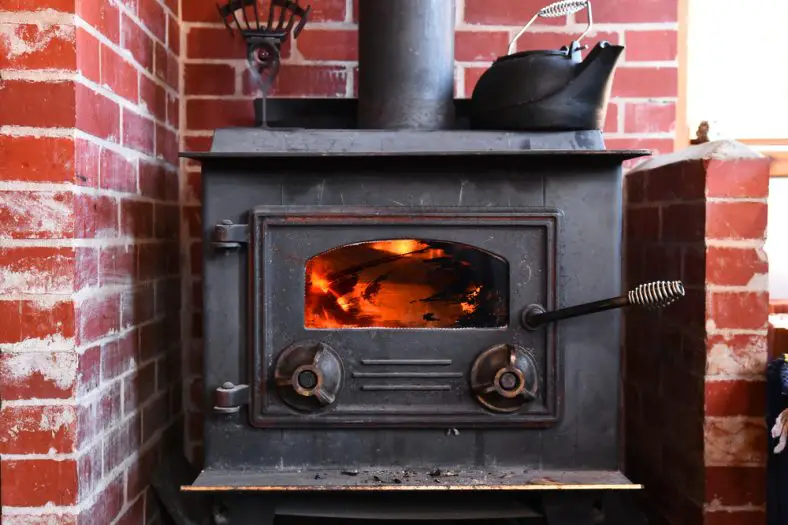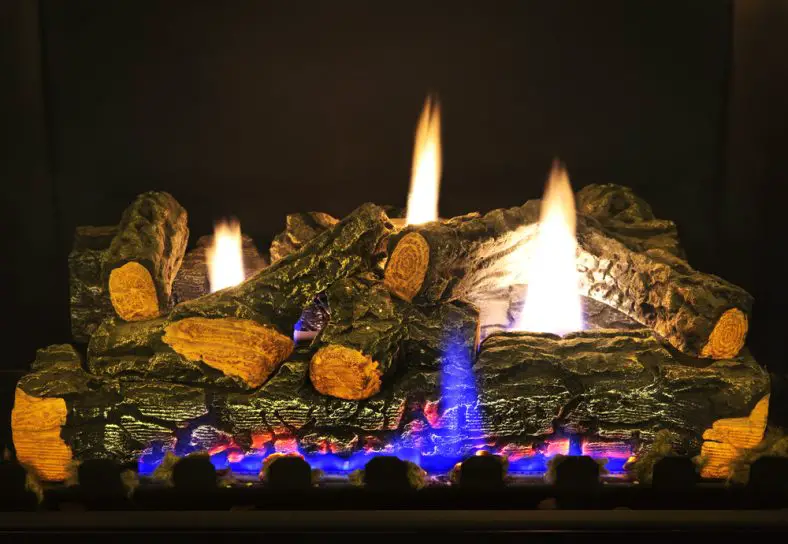When it comes to heating your home with a wood burning stove, selecting the right firewood is crucial for efficiency, warmth, and safety.
The type of firewood you use can significantly impact the heat output, burn time, and even the maintenance of your stove.
In this comprehensive guide, we will explore the factors to consider when choosing firewood for a wood burning stove, highlight the best types of firewood, provide tips for preparation and efficient burning, and discuss safety precautions.
So, let’s dive in and discover the secrets to selecting the best firewood for a wood burning stove.
Understanding the Characteristics of Firewood
To make an informed choice of the best firewood for a wood burning stove, it’s essential to understand the characteristics of firewood. Each type of wood has its own unique properties that affect its performance in a wood burning stove.
- Heat Value: The heat value of firewood refers to the amount of heat it can produce when burned. Hardwoods, such as Oak, Maple, and Ash, have higher heat values and provide long-lasting warmth. On the other hand, softwoods like Pine, Cedar, and Fir have lower heat values but ignite quickly.
- Burn Time: Burn time refers to how long firewood can sustain a fire. Hardwoods generally have longer burn times compared to softwoods. This means you’ll need to add less hardwood to the stove to maintain a consistent heat output.
- Smoke Production: The amount of smoke produced by firewood can vary. Hardwoods typically produce less smoke than softwoods, making them ideal for those concerned about air quality and minimizing smoke buildup in the chimney.
- Resin Content: Resin is a sticky substance found in some types of wood, and it can affect stove maintenance. Softwoods tend to have higher resin content, which can lead to the accumulation of creosote in the chimney. Regular cleaning is necessary when burning resinous wood.
Best Firewood for a Wood Burning Stove
Not all firewood is created equal. Some types of wood are more suitable for wood burning stoves due to their properties and performance.
Hardwoods:
- Oak: Oak is known for its high density, slow burn, and excellent heat output. It provides a steady and long-lasting fire, making it a popular choice for wood burning stoves.
- Maple: Maple wood is prized for its clean-burning characteristics and its ability to produce a consistent heat output. It is also readily available in many regions.
- Ash: Ash wood is highly regarded for its low moisture content and easy ignitability. It burns evenly and produces a steady heat, making it a reliable choice for wood burning stoves.

Softwoods:
- Pine: Pine wood ignites quickly and produces a vibrant flame. It is often used as kindling due to its resin content. However, it’s important to use pine in moderation as its high resin content can lead to creosote buildup.
- Cedar: Cedar wood is known for its pleasant aroma and easy lighting. It burns relatively quickly and provides a good heat output, but like pine, it should be used in moderation.
- Fir: Fir wood is readily available and offers a decent heat output. It can be used as a supplementary firewood in combination with hardwoods to prolong burn time.
Evaluating Firewood Moisture Content
Moisture content plays a vital role in firewood performance. Burning wet or unseasoned wood can lead to inefficient combustion, increased smoke production, and the formation of excessive creosote.
Importance of Seasoned Firewood: Seasoned firewood refers to wood that has been properly dried to reduce its moisture content. Burning seasoned firewood ensures cleaner and more efficient combustion, resulting in higher heat output and reduced smoke.
Identifying and Measuring Moisture Content: Moisture meters are useful tools for determining the moisture content of firewood. Ideally, firewood should have a moisture content below 20% for optimal burning. Anecdote: One way to check if the firewood is properly seasoned is by knocking two pieces together. If they produce a hollow sound, it indicates that the wood is dry and ready to burn.
Preparing Firewood for a Wood Burning Stove
Properly preparing firewood enhances its performance and ensures a more enjoyable wood burning experience.
Cutting and Splitting Techniques: When cutting firewood, it’s important to choose the right size for your wood burning stove. Logs should be cut into manageable lengths and split to expose the inner wood, which aids in drying and ignition. Anecdote: I once struggled to split a large log until I discovered the effectiveness of using a splitting maul—a heavy and powerful tool designed specifically for this purpose.
Storing Firewood: Storing firewood properly is crucial for maintaining its low moisture content. It should be stacked off the ground, protected from rain and snow, and allowed to dry in a well-ventilated area. Anecdote: I learned the hard way that covering firewood too tightly with a tarp can trap moisture and hinder the drying process.
Additional Considerations for Wood Burning Stoves
Regional Availability: The availability of different firewood types may vary depending on your location. It’s important to choose firewood that is readily accessible and sustainable in your area.
Environmental Impact and Sustainability: Selecting firewood from sustainable sources helps preserve forests and promotes ecological balance. Look for certified firewood suppliers or consider using fallen or reclaimed wood when possible.
Avoiding Prohibited or Low-Quality Firewood: Some regions have regulations in place to prevent the spread of pests and diseases through firewood. It’s essential to be aware of any restrictions and avoid using prohibited or low-quality firewood.
Tips for Efficiently Burning Firewood in a Stove
Burning firewood efficiently maximizes heat output and reduces environmental impact. Follow these tips for optimal burning:
Building a Proper Fire: Arrange the firewood in a way that allows proper airflow for efficient combustion. Start with kindling and gradually add larger pieces, ensuring enough space between logs for air circulation.
Managing Airflow and Damper Settings: Adjust the stove’s air vents and damper to regulate the amount of oxygen supplied to the fire. Controlling airflow helps maintain an even burn and prevents excessive smoke.
Safety Precautions when Using Firewood in a Stove
While wood burning stoves can provide cozy warmth, safety should always be a top priority. Follow these safety precautions:
Clearances and Ventilation Requirements: Ensure proper clearance between the stove and surrounding combustible materials. Adequate ventilation is essential to prevent the buildup of harmful gases and maintain indoor air quality.
Regular Maintenance and Inspections: Schedule regular maintenance and inspections to keep your wood burning stove in safe working condition. Anecdote: I once discovered a small crack in the stove’s door gasket during a routine inspection, which, if left unattended, could have compromised the stove’s efficiency and safety.
Final Thoughts
Selecting the best firewood for a wood burning stove is a decision that can significantly impact your heating experience. By considering the heat value, burn time, smoke production, and resin content of different firewood types, you can choose the right wood that meets your specific needs.
Based on the factors discussed in this article, my recommendation for the best firewood for a wood burning stove would be hardwoods such as
- Oak
- Maple
- Ash.
These hardwoods offer high heat values, long burn times, and less smoke production compared to softwoods. Additionally, ensure the firewood is properly seasoned with a moisture content below 20% for optimal burning efficiency.
Remember to evaluate moisture content, prepare firewood properly, and prioritize safety precautions for a comfortable and safe wood burning experience. So, go ahead and enjoy the warmth and ambiance of your wood burning stove with the perfect firewood companion.


